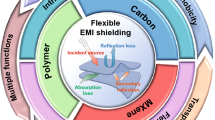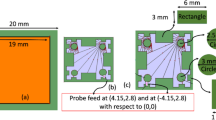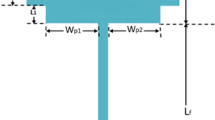Abstract
This paper presents a theoretical framework using multiple reconfigurable intelligent surfaces (RISs) for enhancing the secrecy performance of wireless systems. In particular, multiple RISs are exploited to support transmitter-legitimate user communication under the existence of an eavesdropper. Two practical scenarios are investigated, i.e., there are only transmitter-eavesdropper links (case 1) and there are both transmitter-eavesdropper and transmitter-RIS-eavesdropper links (case 2). We mathematically obtain the closed-form expressions of the average secrecy capacity (ASC) of the considered system in these two investigated cases over Nakagami-m fading channels. The impacts of the system parameters, such as the locations of the RISs, the number of REs, and the Nakagami-m channels, are deeply evaluated. Computer simulations are used to validate our mathematical analysis. Numerical results clarify the benefits of using multiple RISs for improving the secrecy performance of wireless systems. Specifically, the ASCs in cases 1 and 2 are significantly higher than that in the case without RISs. Importantly, when the locations of the RISs are fixed, we can arrange the larger RSIs near either the transmitter or legitimate user to achieve higher ASCs. In addition, when the numbers of reflecting elements (REs) in the RISs increase, the ASCs in cases 1 and 2 are greatly enhanced.







Similar content being viewed by others
Data Availability
Data will be made available on reasonable request.
Notes
We should note that previous works, such as [4, 16], often normalized the system parameters. Thus, their results may not be suitable in 5G and B5G networks. Meanwhile, our results fully reflect the behaviors of 5G and B5G networks because the system and channel parameters are set based on practical measurements.
In the previous works, since \(\rho _e\) is fixed while \(\rho _d\) is increased when \(P_s\) increases, the ASC avoids the saturation ceilings in the high transmit power regime [4].
References
Lu W, Ding Y, Gao Y, Hu S, Wu Y, Zhao N, Gong Y (2022) Resource and trajectory optimization for secure communications in dual unmanned aerial vehicle mobile edge computing systems. IEEE Trans. Ind. Informatics 18(4):2704–2713
Hoang TM, Dung LT, Nguyen BC, Tran XN, Kim T (2021) Secrecy outage performance of FD-NOMA relay system with multiple non-colluding eavesdroppers. IEEE Trans. Veh. Technol. 70(12):12 985--12 997
Hoang TM, Duong TQ, Tuan HD, Lambotharan S, Hanzo L (2021) Physical layer security: Detection of active eavesdropping attacks by support vector machines. IEEE Access 9:31 595--31 607
Do D, Le A, Ha NX, Dao N (2022) Physical layer security for internet of things via reconfigurable intelligent surface. Future Gener. Comput. Syst. 126:330–339
Ai Y, de Figueiredo FAP, Kong L, Cheffena M, Chatzinotas S, Ottersten BE (2021) Secure vehicular communications through reconfigurable intelligent surfaces. IEEE Trans. Veh. Technol. 70(7):7272–7276
Ha D, Duy TT, Son PN, Le-Tien T, Voznák M (2021) Security-reliability trade-off analysis for rateless codes-based relaying protocols using NOMA, cooperative jamming and partial relay selection. IEEE Access 9:131 087--131 108
Thai CDT, Bao V-NQ, Vo N-S (2022) Secure communication using interference cancellation against multiple jammers. IEEE Trans. Veh, Technol
Atapattu S, Fan R, Dharmawansa P, Wang G, Evans JS, Tsiftsis TA (2020) Reconfigurable intelligent surface assisted two-way communications: Performance analysis and optimization. IEEE Trans. Commun. 68(10):6552–6567
Yu H, Tuan HD, Nasir AA, Duong TQ, Poor HV (2020) Joint design of reconfigurable intelligent surfaces and transmit beamforming under proper and improper gaussian signaling. IEEE J. Sel. Areas Commun. 38(11):2589–2603
Basar E, Renzo MD, de Rosny J, Debbah M, Alouini M, Zhang R (2019) Wireless communications through reconfigurable intelligent surfaces. IEEE Access 7:116 753--116 773
Björnson E, Sanguinetti L (2020) Power scaling laws and near-field behaviors of massive MIMO and intelligent reflecting surfaces. IEEE Open J. Commun. Soc. 1:1306–1324
Chen Y, Ai B, Zhang H, Niu Y, Song L, Han Z, Poor HV (2021) Reconfigurable intelligent surface assisted device-to-device communications. IEEE Trans. Wirel. Commun. 20(5):2792–2804
Björnson E, Özdogan Ö, Larsson EG (2020) Intelligent reflecting surface versus decode-and-forward: How large surfaces are needed to beat relaying? IEEE Wirel. Commun. Lett. 9(2):244–248
Boulogeorgos AA, Alexiou A (2020) Performance analysis of reconfigurable intelligent surface-assisted wireless systems and comparison with relaying. IEEE Access 8:94 463--94 483
ElMossallamy MA, Zhang H, Song L, Seddik KG, Han Z, Li GY (2020) Reconfigurable intelligent surfaces for wireless communications: Principles, challenges, and opportunities. IEEE Trans. Cogn. Commun. Netw. 6(3):990–1002
Yang L, Yang J, Xie W, Hasna MO, Tsiftsis T, Renzo MD (2020) Secrecy performance analysis of RIS-aided wireless communication systems. IEEE Trans. Veh. Technol. 69(10):12 296--12 300
Makarfi AU, Rabie KM, Kaiwartya O, Li X, Kharel R (2020) Physical layer security in vehicular networks with reconfigurable intelligent surfaces. In 91st IEEE Vehicular Technology Conference, VTC Spring 2020, Antwerp, Belgium, May 25-28, 2020. IEEE, pp. 1–6
Nguyen ND, Le A, Munochiveyi M (2021) Secrecy outage probability of reconfigurable intelligent surface-aided cooperative underlay cognitive radio network communications. In 22nd Asia-Pacific Network Operations and Management Symposium, APNOMS 2021, Tainan, Taiwan, September 8-10, 2021. IEEE, pp. 73–77
Tang Z, Hou T, Liu Y, Zhang J (2021) Secrecy performance analysis for reconfigurable intelligent surface aided NOMA network. In IEEE International Conference on Communications Workshops, ICC Workshops 2021, Montreal, QC, Canada, June 14-23, 2021. IEEE, pp. 1–6
Ferreira RC, Facina MSP, de Figueiredo FAP, Fraidenraich G, de Lima ER (2021) Secrecy analysis and error probability of LIS-aided communication systems under Nakagami-m fading. Entropy 23(10):1284
Khoshafa MH, Nkouatchah TMN, Ahmed MH (2021) Reconfigurable intelligent surfaces-aided physical layer security enhancement in D2D underlay communications. IEEE Commun. Lett. 25(5):1443–1447
Trigui I, Ajib W, Zhu W (2021) Secrecy outage probability and average rate of RIS-aided communications using quantized phases. IEEE Commun. Lett. 25(6):1820–1824
Zhang J, Du H, Sun Q, Ai B, Ng DWK (2021) Physical layer security enhancement with reconfigurable intelligent surface-aided networks. IEEE Trans. Inf. Forensics Secur. 16:3480–3495
Youn J, Son W, Jung BC (2021) Physical-layer security improvement with reconfigurable intelligent surfaces for 6g wireless communication systems. Sensors 21(4):1439
Tuan PV, Son PN, Duy TT, Nga TTK, Koo I et al (2022) Information security in intelligent reflecting surface-aided two-way network. In 2022 IEEE Ninth International Conference on Communications and Electronics (ICCE). IEEE, pp. 155–159
Gong C, Yue X, Wang X, Dai X, Zou R, Essaaidi M (2022) Intelligent reflecting surface aided secure communications for NOMA networks. IEEE Trans. Veh. Technol. 71(3):2761–2773
Cao K, Ding H, Li W, Lv L, Gao M, Gong F, Wang B (2022) On the ergodic secrecy capacity of intelligent reflecting surface aided wireless powered communication systems. IEEE Wirel. Commun. Lett. 11(11):2275–2279
Tran PT, Nguyen BC, Hoang TM, Le XH, Nguyen VD (2022) Exploiting multiple RISs and direct link for performance enhancement of wireless systems with hardware impairments. IEEE Trans. Commun. 70(8):5599–5611
Yang L, Yang Y, da Costa DB, Trigui I (2021) Outage probability and capacity scaling law of multiple RIS-aided networks. IEEE Wirel. Commun. Lett. 10(2):256–260
Yildirim I, Uyrus A, Basar E (2021) Modeling and analysis of reconfigurable intelligent surfaces for indoor and outdoor applications in future wireless networks. IEEE Trans. Commun. 69(2):1290–1301
Hou T, Liu Y, Song Z, Sun X, Chen Y, Hanzo L (2020) Reconfigurable intelligent surface aided NOMA networks. IEEE J. Sel. Areas Commun. 38(11):2575–2588
Tahir B, Schwarz S, Rupp M (2021) Analysis of uplink IRS-assisted NOMA under nakagami-m fading via moments matching. IEEE Wirel. Commun. Lett. 10(3):624–628
Alnwaimi G, Boujemaa H (2021) Non orthogonal multiple access using reconfigurable intelligent surfaces. Wirel. Pers. Commun. 121(3):1607–1625
Leon-Garcia A, Leon-Garcia A (2008) Probability, statistics, and random processes for electrical engineering. Pearson/Prentice Hall, 3rd ed. Upper Saddle River, NJ
Prudnikov AP (1998) Integrals and series. vol 3, More special functions; Prudnikov AP, Brychkov Yu A, Marichev OI; translated from the Russian by Gould GG. Gordon and Breach
Jeffrey A, Zwillinger D (2007) Table of integrals, series, and products. Academic press
Nguyen BC, Dung LT, Hoang TM, Tran XN, Kim T (2021) Impacts of imperfect CSI and transceiver hardware noise on the performance of full-duplex DF relay system with multi-antenna terminals over nakagami-m fading channels. IEEE Trans. Commun. 69(10):7094–7107
da Costa DB, Ding H, Ge J (2011) Interference-limited relaying transmissions in dual-hop cooperative networks over nakagami-m fading. IEEE Commun. Lett. 15(5):503–505
Funding
The authors did not receive support from any organization for the submitted work.
Author information
Authors and Affiliations
Corresponding author
Ethics declarations
Competing Interests
The authors have no competing interests to declare that are relevant to the content of this article.
Additional information
Publisher's Note
Springer Nature remains neutral with regard to jurisdictional claims in published maps and institutional affiliations.
Appendix
Appendix
This appendix detailedly provides the step-by-step derivations of the CDFs of \(\beta _d\), \(\beta _e^{c1}\), and \(\beta _e^{c2}\).
Firstly, \(F_{\beta _e^{c1}}(x)\) can be derived directly by using the CDF of the channel gain following Nakagami-m fading channels [37], i.e.,
Secondly, \(F_{\beta _d}(x)\) and \(F_{\beta _e^{c2}}(x)\) are calculated as follows. Let \(\mathcal {X}_{dkl}= g_{kl} h_{kl} \), \(\mathcal {Y}_{dk} = \sum _{l=1}^{L_k} \mathcal {X}_{dkl} \), \(\mathcal {Z}_{d} = \sum _{k=1}^{K} \mathcal {Y}_{dk}\), \(\mathcal {T}_{d} = h_{sd} + \mathcal {Z}_d\), \(\mathcal {X}_{ekl}= g_{kl} r_{kl} \), \(\mathcal {Y}_{ek} = \sum _{l=1}^{L_k} \mathcal {X}_{ekl} \), \(\mathcal {Z}_e = \sum _{k=1}^{K} \mathcal {Y}_{ek}\), and \(\mathcal {T}_e = h_{se} + \mathcal {Z}_e\) be new variables, Eqs. 23 and 25 respectively become
It is obvious that \(F_{\beta _d}(x)\) and \(F_{\beta _e^{c2}}(x)\) have similar types. Thus, in the following parts, we focus on deriving \(F_{\beta _d}(x)\), \(F_{\beta _e^{c2}}(x)\) can be derived similarly as \(F_{\beta _d}(x)\).
Since the Nakagami-m fading channels are considered, the nth moment of \(h_{sd}\) is given by [28]
From Eq. 40, we obtain the first and second moments of \(h_{sd}\) as
Since \(\mathcal {X}_{dkl}= g_{kl} h_{kl} \), the PDF of \(\mathcal {X}_{dkl}\) is calculated as
Replacing the PDF given in Eq. 11 into Eq. 43, we have
Applying [36, Eq. (3.478.4)], Eq. 44 becomes
where \(\alpha _{kl} = \sqrt{\frac{m_{g_k} m_{h_k}}{\Omega _{g_k} \Omega _{h_k}}}\).
Now, the nth moment of \(\mathcal {X}_{dkl}\) is computed as
Using [36, Eq. (6.561.16)], Eq. 46 becomes
Then, the CDF of \(\mathcal {X}_{dkl}\) is given by
Now, we can derive the CDF of \(\mathcal {Y}_{dk} = \sum _{l=1}^{L_k} \mathcal {X}_{dkl} \) as
Based on [38], we obtain the nth moment of \(\mathcal {Y}_{dk}\) as
where \({a \atopwithdelims ()b} = \frac{a!}{b!(a-b)!}\), and the nth moment of \(\mathcal {Z}_d = \sum _{k=1}^{K} \mathcal {Y}_{dk}\) is
From Eqs. 47,50 and 51, we compute the first and second moments of \({\mathcal {Z}_d}\) as
Then, the nth moment of \({\mathcal {T}_{d}} = h_{sd} + {\mathcal {Z}_d}\) is calculated as
Consequently, the first and second moments of \({\mathcal {T}_d}\) calculated from Eq. 54 are
Similarly, the first and second moments of \({\mathcal {T}_e}\) are expressed as
Therefore, the CDFs of \({\mathcal {T}_d}\) and \({\mathcal {T}_e}\) are, respectively, given by
where
Next, we can calculate the CDFs of \(\beta _d\) and \(\beta _e^{c2}\) from Eqs. 38 and 39 as
Applying Eqs. 59 and 60,65, and 66 become Eqs. 26 and 28, respectively. The proof is thus complete.
Rights and permissions
Springer Nature or its licensor (e.g. a society or other partner) holds exclusive rights to this article under a publishing agreement with the author(s) or other rightsholder(s); author self-archiving of the accepted manuscript version of this article is solely governed by the terms of such publishing agreement and applicable law.
About this article
Cite this article
Nguyen, B.C., Van, QN., Dung, L.T. et al. Secrecy Performance of Multi-RIS-Assisted Wireless Systems. Mobile Netw Appl 28, 1206–1219 (2023). https://doi.org/10.1007/s11036-023-02125-7
Accepted:
Published:
Issue Date:
DOI: https://doi.org/10.1007/s11036-023-02125-7




